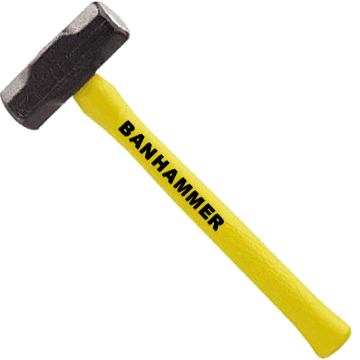Top Reasons People Get Banned
From The Amazon Affiliate Program

Intro
Amazon's affiliate program known as "Amazon Associates" is the largest affiliate program on the internet, and one that can help you monetize your website for steady income. The rules of the Amazon Associate's program are very strict, and if you do not abide by the rules you might be banned consequently - Amazon bans are not evadable, as they double-ban people who sign-up after they've been banned. This is why one should aim to prevent Amazon bans in advance.
Moreover, there are only a handful of rules to abide by that will ensure your website doesn’t raise red-flags or gets marked by the Amazon system for not abiding Amazon TOS/affiliate rules. Here we cover the most effective ways to avoid Amazon bans, as these are known to cause more than 99%+ of all bans on the Amazon Associate's program:
#1 Listing Prices On Your Website
If you list Amazon product prices on your website, this is almost a guaranteed ban. While you mention or review products, you're not allowed to mention their price. The only way you're allowed to mention the price is by linking directly to the Amazon product page and instructing prospects to "Check the price" on the website. If you want to directly embed the price on your website, Amazon allows this on the condition you use their plug-ins (usually Amazon plug-ins list the products in question and link them directly to the item on Amazon's website). They appear to be similar to ads, but they integrate well with most websites.
#2 Asking Family Members To Buy From Affiliate Links
These offenses are classified as "incentives". Amazon TOS is against incentive-based purchases, and only allows organic purchases based on prospects who are not affiliated to you. This includes sending your links to friends, family members or spouses. It also includes you directly encouraging people to purchase a certain Amazon product. The main thing they look after is positive reinforcement of products, thus affiliates are allowed to talk well about a product but not encourage prospects to buy directly. If you're caught sending your links to family members, this breaks the Amazon TOS and you'll be banned very fast.
#3 Shortening URL's/Cloaking Referrals
This is a common mistake marketers make because they wish to make their links more attractive and hide that they're "referring" prospects to the Amazon item. Frequently marketers engage in tactics such as cloaking referrals (a PHP trick that removes the referring URL to a website but still keeps the cookies) and both of those are bannable-offenses according to Amazon TOS.
#4 Using Amazon Product Images
If you copy images from Amazon (or Amazon product reviews) this is also against the TOS and Amazon may ban you for it. This is similar to the price-listing offense, and the only way to bypass that (in order to use Amazon's images directly on your website) is to use the Amazon plug-in that displays the item for sale.
#5 Forgetting Amazon Disclaimers
Amazon requires a "Disclaimer" which is a short piece of text that informs prospects they're being referred to an Amazon product and that you're getting a cut off each sale. This can be minimized at the bottom of a website, but the important thing is that the disclaimer is present on your website.
#6 Promoting Amazon Over Email/PDF's
Amazon is sensitive about e-mail marketing and/or book/PDF marketing - their only "approved" form of marketing is through public websites (or YouTube videos) that are visible to the public and can be indexed by crawlers. Amazon doesn't like e-mail marketing and PDF/book marketing because it’s private and it means you can incentivize people to buy. Amazon doesn't have control of this source of marketing and can't verify whether or not you’re incentivizing those referrals. This is why you should refrain from using e-mail marketing or affiliate links in your books/reports (especially in PDF format).